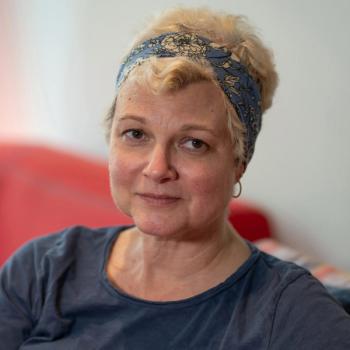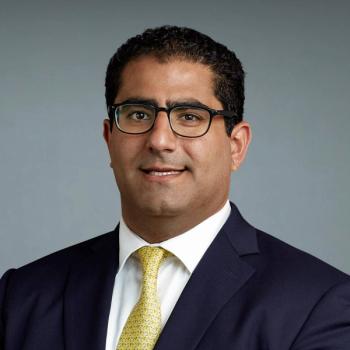
- Lung Cancer Special Issue (2)
- Volume 2
- Issue 1
Beyond the Lungs
New therapies offer options for patients with non-small cell lung cancer whose disease has spread to the brain.
When Jodi Parker learned that she had stage 4 non-small cell lung cancer (NSCLC), she knew what she was in for. After all, she had worked as an oncology nurse from 1982 to 1992, administering chemotherapy, the medicine her own doctor now recommended.
After being told she had a year to live, she decided to let nature take its course and go straight to hospice, avoiding treatment. Parker’s doctor in Idaho Falls, Idaho, reminded her that she had a loving family, including a husband and adult children, and much to look forward to. Despite having an aggressive disease, often with a poor prognosis, some patients respond well to treatment, at least for a while. “The conversation changed my life,” she says.
That was in 2013. Since then, Parker has celebrated her son’s marriage and now plays with three beloved grandchildren. “I had not realized that in the past 30 years, they made tremendous strides in treating lung cancer,” she says.
It hasn’t been an easy road. Parker needed multiple procedures to drain fluid around her heart and lungs. Chemotherapy stopped working well for her in 2014, and additional genetic testing revealed an ALK-positive mutation, making her eligible for Xalkori (crizotinib), a targeted therapy pill. “Having that year of chemo may have improved my response rate to targeted therapy drugs,” Parker says.
In 2015, she experienced vision changes, word choice confusion and balance issues. An MRI scan showed two brain tumors — a golf ball-size one on the left and a smaller one on the right. Parker had brain surgery followed by radiation and then changed to Zykadia (ceritinib), a second-generation targeted therapy. She’s currently stable.
Although lung cancer with brain metastases was once a death sentence, Parker found out firsthand how dramatically newer treatments and genetic testing have changed potential outcomes.
BRAIN METASTASES AT DIAGNOSIS
There’s a strong correlation between brain involvement and NSCLC. At diagnosis of advance-stage disease, approximately 10% of patients also have brain metastases. In all NSCLC cases, 16%-20% have brain metastases; for those with ALK and EGFR genetic mutations, incidence rises to 50%-60% during the disease course. About 33% of those with the ROS1 mutation will develop brain metastases.
AJ Patel, who lives in Irvine, California, was one of those patients. For two years, he tried to manage his frequent throat clearing with allergy medications and also had bloodwork done. A 47-year-old nonsmoker who ran 20 miles a week, Patel persuaded his doctor to order a chest X-ray in 2013. Doctors found a lung nodule but weren’t concerned, recommending a repeat X-ray in 3 to 6 months. But after coughing up blood twice soon after, he got a CT scan, which revealed a 7-centimeter nodule in his lower left lobe. A biopsy confirmed stage 4 lung cancer.
Doctors insisted that Patel get not only genomic testing but also an MRI brain scan. “I have lung cancer. My brain is perfectly fine,” he recalls telling the oncologist. But the scan showed a 3- and 4-centimeter tumor on the left hemisphere, where the motor function is located, plus smaller tumors.
There’s a high risk of a person with NSCLC having brain metastases even with no symptoms, says Dr. Alice Tsang Shaw, who holds a doctorate in genetics and is director of thoracic oncology at Massachusetts General Hospital Cancer Center in Boston. Given the clinical implications of brain metastases, a brain MRI is routine when staging patients with newly diagnosed lung cancer, though not all oncologists do this, Shaw says. During diagnosis, patients with NSCLC should also undergo tumor genomic testing, which can affect therapy choices.
Treatment also depends on factors such as whether the cancer is squamous or nonsquamous cell, which require different approaches, says Dr. Howard (Jack) West, a thoracic oncologist at City of Hope in Los Angeles.
Physicians also consider the patient’s fitness level and performance status, which indicate the ability to perform activities of daily living.
Before giving a systemic treatment like chemotherapy, West considers whether a patient requires immediate treatment for an urgent local issue, such as pain from bone metastases or severe shortness of breath from pleural effusion. He assesses how likely systemic therapy will work against any intracranial disease, which largely depends on if a tumor harbors a driver mutation that can often be treated effectively with a matched targeted therapy, including in the brain for many of the newer treatments. He also considers the amount of tumor PD-L1 expression, which correlates to how likely the cancer cells will respond to immunotherapy, potentially in the brain, as well as in the rest of the body.
CONSIDERATIONS FOR NEUROSURGERY
Choosing the treatment can be complicated, Shaw says, given all the factors, including whether brain tumors should be surgically removed, radiated or treated with chemotherapy, chemoimmunotherapy or targeted therapy. She might call for a neurosurgical consultation if the lesion is larger and has a mass effect, compressing other areas of the brain, and she’s concerned the brain will herniate, which is often fatal.
Location matters, too. If a single large lesion causing symptoms is in the upper part of the brain, where there’s more room to operate, that makes the decision easier, says Dr. Mohammad Jahanzeb, a medical oncologist and chief medical oncology scientific and strategic adviser at 21st Century Oncology. A lesion closer to the brainstem, where the skull narrows, creates more potential for nerve damage.
Patel faced the decision of operating plus radiation versus radiation only. Knowing that the operation was more likely to remove his lesion than radiation alone, he opted for surgery, though the recovery was difficult and lengthy. It was followed by radiation.
Once treatment is underway, patients who do not have brain metastases on initial diagnosis will not necessarily get periodic brain scans. “You don’t routinely do surveillance MRI to follow places that didn’t have metastases before,” West says.
Jahanzeb does order scans for patients with a high propensity for brain metastases, such as those with EGFR- or ALK-positive mutations. During treatment, he scans patients every six months to catch metastases early.
Although Laura Greco of Wilton, New York, did not initially receive a diagnosis of brain metastases, she did have an ALK-positive mutation. She would have undergone periodic brain scans, but she was allergic to the gadolinium dye used in her initial scan. Her doctors decided not to perform another one until she showed symptoms of the cancer’s growth.
Greco received a stage 3a NSCLC diagnosis in 2015 at age 40, following a car accident. After undergoing a full-body CT scan to ensure there were no problems from the crash, doctors told her to get a detected lung nodule checked out. She mentioned this to her primary care physician the next week. At first the doctor wasn’t concerned. He had asked if she had lost weight recently, experienced shortness of breath or fatigue or smoked. The answer to all were no, and Greco had no symptoms. However, the report showed a nearly 4-centimeter mass, and a biopsy confirmed NSCLC. The prior full-body CT scan and a brain MRI after diagnosis showed no spread of the cancer beyond her lung.
Greco initially received chemotherapy and radiation for seven weeks, followed by lung surgery. She then underwent four more rounds of chemotherapy.
THE ROLE OF RADIATION
Whole brain radiotherapy (WBRT) for brain metastases is still common but may not be the first treatment choice. More focused stereotactic radiosurgery (SRS) can be used for one or two spots in the brain and spare other areas, Shaw says. If there are multiple lesions, WBRT can be used but will likely cause neurocognition and motor deficit side effects, especially over the long term.
WBRT was more common 10 to 15 years ago because overall survival of metastatic NSCLC was about a year, Jahanzeb explains: “In that case, we weren’t worried about the long-term sequelae of whole brain radiation.” Now that patients, especially those with genetic mutations, are living longer, sometimes five years or more, long-term side effects matter more.
SRS, a nonsurgical approach that uses focused beams to treat tumors, has a relatively low toxicity, Shaw says, but some doctors prefer to avoid it if possible. “Depending on the type of NSCLC, it’s a controversial question whether we should bypass radiation and try systemic therapy first or continue to do what we’ve done historically, giving the radiation up front to control brain metastases,” she says. For ALK-positive patients, for example, an ALK inhibitor that penetrates the brain is usually preferable to SRS as a frontline therapy, she says.
Greco learned of her brain metastases in 2016 after she developed neck pain and an MRI revealed 10 tumors of over 1 centimeter and extensive brain swelling. “One doctor called my brain scary,” she says.
Her primary care doctor was not optimistic, but Greco had stayed on top of the research since her initial diagnosis. She knew that although Alecensa (alectinib) was not yet approved by the Food and Drug Administration (FDA) for her indication, a clinical trial showed the agent’s effectiveness in reducing brain tumors in ALK-positive patients. Her insurance approved its use for her, and it reduced her tumors by 50% in three weeks and by 75% at her six-week scan. She ultimately needed SRS twice in 2018 and does not rule out using WBRT if needed. “But that’s the nuclear option. We’re waiting until there are no other choices,” Greco says.
Some of the targeted therapies show effectiveness in days, Shaw says, and can penetrate the blood-brain barrier, shrinking the tumors and allowing some patients to avoid neurosurgery. Some targeted therapies have a 60% or higher response rate in the brain.
MORE OPTIONS WITH MUTATIONS
A high percentage of patients with NSCLC have genetic mutations in their tumor: About 15% of patients have the EGFR mutation; 2%-7%, the ALK mutation; and 1%-2%, the ROS1 mutation. Patients with NSCLC who have never smoked, like Parker, Patel and Greco, as well as women and Asian patients, have a higher rate of certain mutations compared with people who have smoked.
During Patel’s hospital stay after brain surgery, his oncologist told him he had the ROS1 mutation. “She was elated,” he says, explaining that there was an oral chemotherapy drug he could take that would target his cancer.
Patients are living longer because of treatments associated with these mutations. Some of the newer drugs penetrate the brain, which traditional chemotherapy doesn’t do well, Jahanzeb says.
Although not all genetic mutations have drug options, EGFR, ALK and ROS1 have both FDA-approved treatments and investigational agents, Shaw says. The success rates give clinicians more enthusiasm for starting with systemic instead of local therapy like radiation or neurosurgery. “This has been a pretty amazing revolution in their care,” Shaw says.
Those who have brain metastases but no genetic mutations shouldn’t lose faith; chemotherapy, chemoimmunotherapy and radiation therapy are still good options, according to Shaw. “Chemoimmunotherapy and chemotherapy can show brain activity,” she says. Those with the adenocarcinoma subtype can try Alimta (pemetrexed), which has some brain penetration and may work for small, asymptomatic lesions.
“Patients with brain metastases used to have a horrible prognosis, but that’s no longer the case,” Jahanzeb says. “There are plenty of effective interventions for the brain.”
Rather than looking at general lung cancer statistics, a patient is better off understanding that the disease and its treatment outcomes depend on patients’ unique situations. “They’re highly variable based on mutation type, how advanced your cancer is, how many organ sites,” Greco says. Researchers don’t have a great way to predict who will respond well and who won’t. Patients should consider themselves outliers, Greco recommends.
Greco, Patel, and Parker all recommend that patients become experts in the disease and treatments to facilitate better discussions with physicians. “Don’t assume the doctor has all the answers,” Greco says. “No one cares about you as much as you. You have to be armed with as much information as you can to make the most educated decision you can.”
Articles in this issue
almost 6 years ago
Living After Lossabout 6 years ago
Paraneoplastic Syndromes: A Puzzling Piece of Cancerabout 6 years ago
It's a Great Day to Thriveabout 6 years ago
Living with Lung Cancer: The Silver Liningsabout 6 years ago
Everyone Deserves Quality Care in Lung Cancerabout 6 years ago
Lung-MAP Trial Reveals Genetic Testing Knowledge Gaps Among Patientsabout 6 years ago
Where You "Belong"about 6 years ago
Longtime Lung Cancer Thriversabout 6 years ago
Strange Signs: Cancer-Related Paraneoplastic Syndromes




